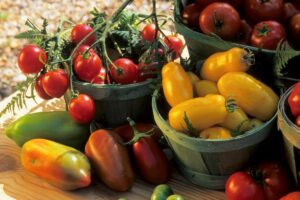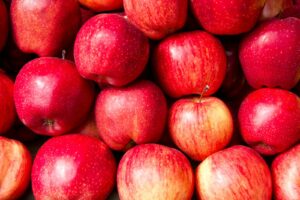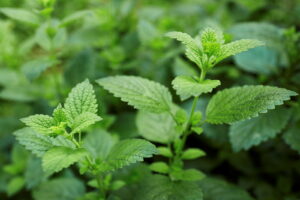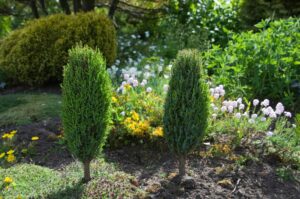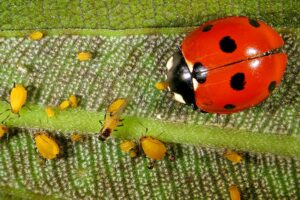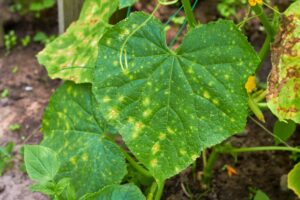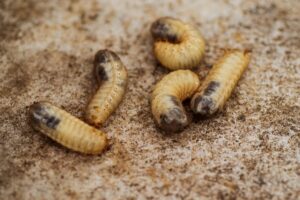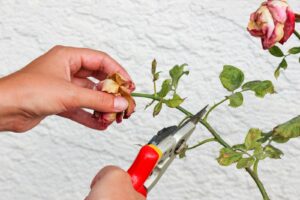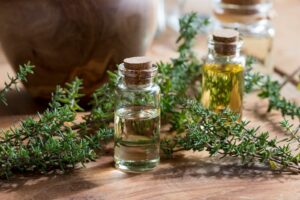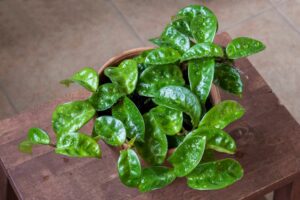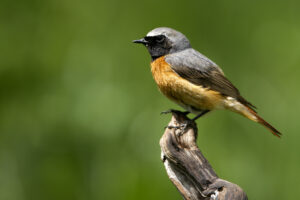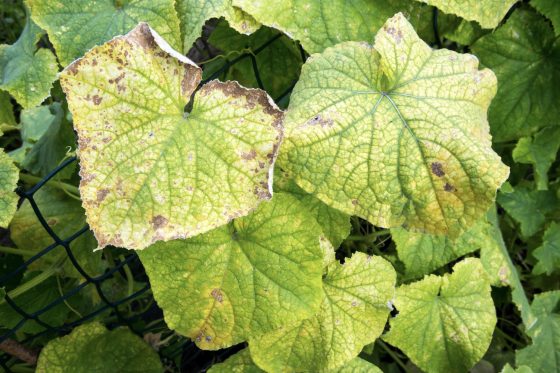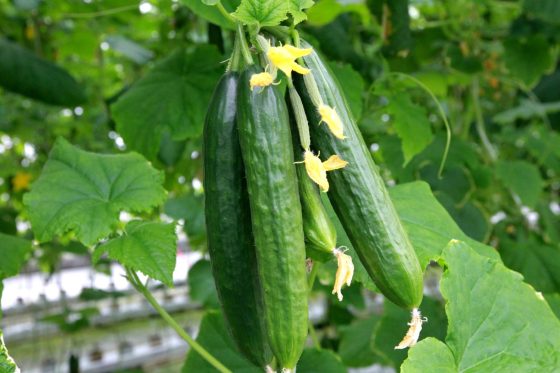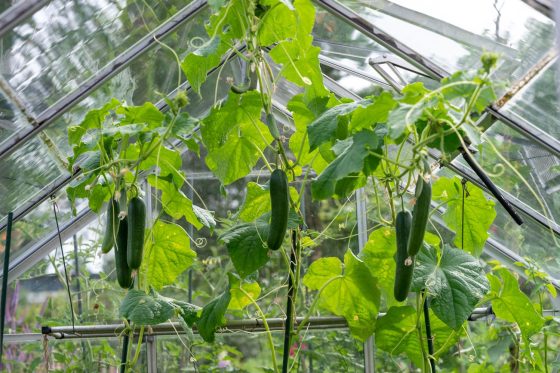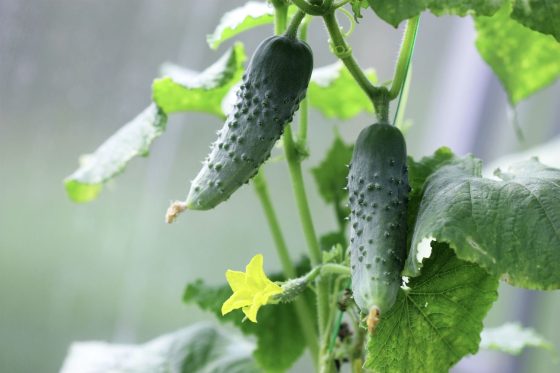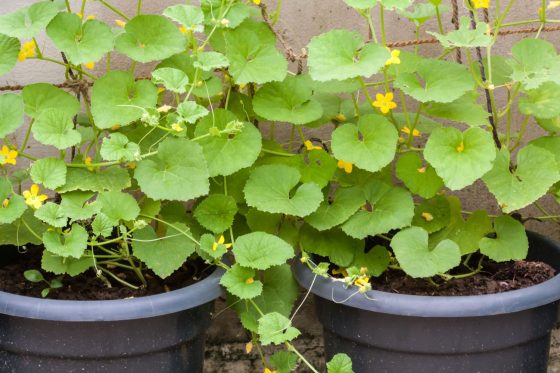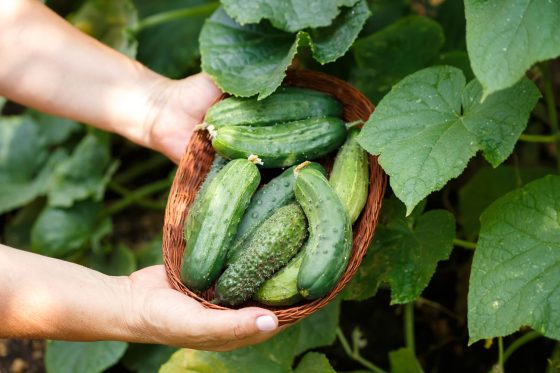Kiwano: growing & harvesting horned melons
Despite their exotic name, kiwanos are low-maintenance, robust garden plants that thrive in warm locations and bear numerous fruits that can be stored for a long time.

Not only does kiwano’s Latin name Cucumis metuliferus reveal this exotic fruit’s similarities to the more common cucumber (Cucumis sativus) but also their location requirements and growing behaviour. Unlike cucumbers, however, kiwanos are less susceptible to disease and their fruits can be stored for up to nine months. The first thing to know about growing your own kiwanos is that they need a warm environment. Keep reading to find out what you need to consider when planting African horned cucumbers, how to care for them and how to eat a kiwano fruit.
Contents
Kiwano: origin and characteristics
The kiwano has several names, including African horned cucumber, horned melon, spiked melon, jelly melon and even cuke-asaurus. Kiwanos are a lesser-known and relatively unique member of the gourd family (Cucurbitaceae). The kiwano originated in the savannah regions of southern Africa’s Kalahari Desert. It was first cultivated in New Zealand and Israel, and it is now slowly finding its way into our gardens.

Horned melons are annual, heat-loving climbers with vines that can reach up to 3 m in length. The heart-shaped leaves, which can grow up to 14 cm in diameter, look similar to cucumber leaves. Kiwano plants produce both female and male flowers since they are monoecious. Kiwano flowers are small and yellow. The spiky fruits grow from the distinctive ovaries of the female flowers.
Botanically, kiwanos are considered berries, as their numerous seeds are embedded in the fleshy interior. Kiwano fruits can grow as large as 12 x 16 cm, but they are usually somewhat smaller. As they ripen, the colour of the kiwano fruit changes from green to yellowy orange. The inside, on the other hand, remains green.

Planting kiwano
Kiwanos love and depend on warmth. They need constant temperatures above 15 °C for healthy growth. Grown outdoors, they need warm, sheltered locations, such as a south-facing wall. Another option is to grow African horned cucumbers in a greenhouse. In either case, kiwanos like a sunny spot and prefer a loose, well-draining, nutrient-rich and evenly moist soil.
Tip: When growing kiwanos in a pot, choose a large container with a capacity of at least 20 litres. Our Plantura Organic Tomato & Vegetable Compost is an ideal substrate. It is already pre-fertilised and, therefore, perfect for vegetables with a higher nutrient requirement. It is also peat-free and is sustainably produced.
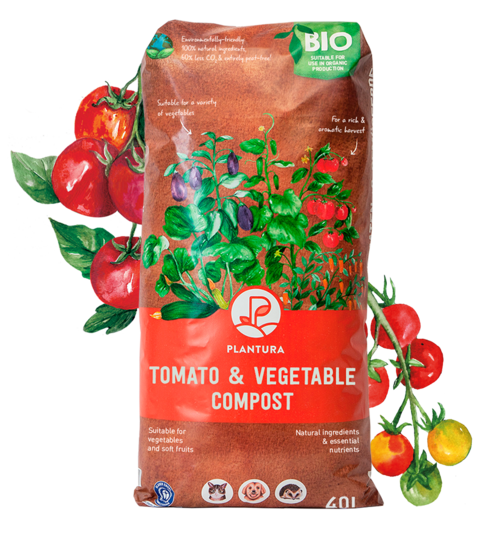
- Perfect for tomatoes & other vegetables such as chillies, courgettes & more
- For strong & healthy plant growth as well as an abundant vegetable harvest
- Peat-free & organic soil: CO2-saving composition
We recommend starting kiwanos indoors because they require warmer temperatures to thrive. That way, when you plant them outdoors in May, they will already have had a head start on growth. In a warm environment, the seedlings develop rather quickly. So, it is best to wait until mid-April to sow horned melon seeds inside, as the seedlings must not be too large when they are planted out in the garden.
- Fill a 10 cm diameter pot with a low-nutrient soil. We recommend our Plantura Organic Herb & Seeding Compost.
- Slightly moisten the soil. In each pot, put 2 to 3 kiwano seeds about 1 to 2 cm deep into the soil.
- Place the pots in a bright place and make sure that the substrate never dries out. The optimal germination temperature is 22 to 24 °C. The first seedlings should be visible after 1 to 2 weeks.
- Continue to grow the seedlings in a bright and warm place at least 20 °C and water them regularly. We recommend adding a liquid fertiliser, such as our Plantura Liquid Tomato Food, to the water in your watering can about once a week.
- If more than one kiwano seed germinates per pot, keep only the strongest seedling, and pull out the rest.

In mid-May, when the outside temperature is regularly above 15 °C, is the time to plant your horned melon seedlings. To avoid shock, place the young seedlings outdoors in the sun for several hours each day to let them adjust. Before planting your kiwanos, you will also need to prepare the soil. Remove weeds and loosen the soil. Kiwanos do not tolerate waterlogging, so creating some mounded rows, also called earthing up, is a good idea − the soil also tends to warm up better with raised rows. Kiwanos require a lot of space to grow. Space the rows at least 1 m apart with 50 to 60 cm between plants. After planting, water the plants thoroughly.
Plant care
Like cucumbers, African horned cucumbers grow better when they have something to climb on. They will grow more abundantly and produce more fruits.

Taking care of kiwanos means, above all, regular watering and fertilising. In the height of summer, it may even be necessary to water them daily. Remember, kiwanos thrive in the heat, so they also prefer warm water. Simply refill the watering can right after watering and leave it in the sun to warm up for the next day. It is also a good idea to mulch around the kiwano plants to save water and protect the soil. Lawn clippings, for example, are an excellent choice because they provide nutrients while also protecting the plant.
Like cucumbers, kiwanos are heavy feeders. This means that simply preparing a garden bed with compost is rarely sufficient to ensure a high yield. During the growing season, we recommend adding our Plantura Liquid Tomato Food to the irrigation water once a week. It has an optimal nutrient ratio for heavy-feeding vegetables.
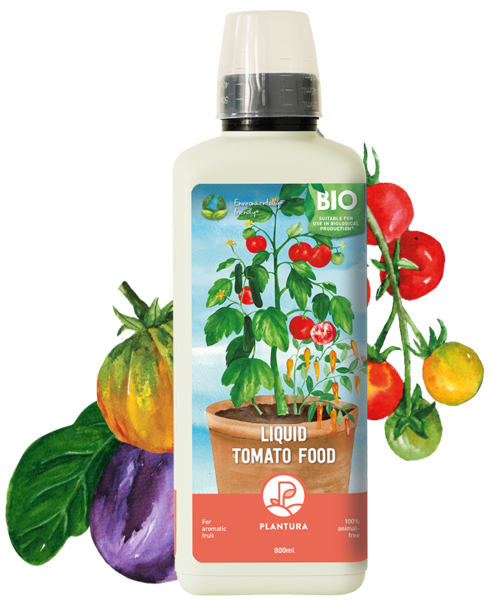
- Perfect for tomatoes & other vegetables
- Liquid fertiliser for healthy plant growth & an abundant harvest
- Quick & easy application - child & pet friendly
It is not necessary to prune or cut the kiwano. If you have enough space, let the plant grow and climb, removing only the shoots that get in the way. If you have limited space, try growing kiwanos vertically with just two vines in a greenhouse and prune them like you would prune cucumbers.
Tip: Kiwanos are much less susceptible to disease than cucumbers. Even downy mildew (Peronosporaceae) rarely afflicts kiwano plants.
Harvesting kiwanos
Growing horned melons typically brings a rich harvest. The plants can bear up to 50 fruits. On average, plants grown in a greenhouse produce a richer harvest than those outdoors. The harvest time for kiwanos begins around mid-August, and this can be recognised by the fact that the fruits are just beginning to turn from green to yellow. Harvest African horned cucumber fruits before they are completely ripe and let them ripen indoors to keep the plant producing higher yields for longer. This encourages the plant to flower again and bear more fruits. You can harvest horned melons well into the autumn. Harvest the remaining ones before the first frost and allow them to ripen inside.
As the fruits are indeed prickly, we recommend wearing gloves when harvesting them. It is also much easier to use secateurs to cut off the fruit. Make sure to leave some of the stalk at the base of the fruit. This way the fruit can be stored for longer.
Take special care with fruits that are harvested when they are still green. Allow them to ripen indoors at room temperature before eating them. They can be stored for six to nine months in a cool place at around 9 °C. However, do not store the fruits in the refrigerator, as they will spoil relatively quickly there.

Tip: Saving the kiwano seeds to sow them again in spring may seem easy enough, but there may be nasty surprises at the next harvest. Kiwanos, like other cucurbits, can become bitter and poisonous. Self-propagation increases the likelihood of this occurring. Since cucurbits are cross-pollinators and like to interbreed, make sure you have at least two kiwano plants close to each other and, most importantly, no cucumbers nearby. As both kiwanos and cucumbers belong to the genus Cucumis, cross-pollination of the two species can easily occur. Hand pollinating the female flowers increases the chance of harvesting pure kiwano seeds. To get viable seeds, the fruits must also be allowed to ripen completely on the plant.
How do you eat kiwanos?
To eat them, cut kiwanos in half either lengthwise or crosswise and spoon out the inner flesh. The numerous seeds in the flesh can be eaten as they are, but they are most typically used in cocktails, salads or sorbets. You can make juice from kiwano fruits by placing the spooned-out flesh in a cheesecloth or fine tea towel and squeezing it out with your hands.
Tip: For a memorable dessert, the hollowed-out shells of kiwano fruit make fun, attractive bowls.

Kiwano melon taste
The taste of kiwanos depends on the degree of ripeness. If the fruits are still green, horned melons taste like cucumbers. As they ripen, their flesh becomes sweeter. Kiwano fruits that ripen to a yellowy orange colour are said to have a flavour that is a cross between melon, banana and lime.
Kiwano melon benefits
Kiwanos, like cucumbers, are primarily composed of water. This makes them a healthy veggie. Kiwanos contain vitamins B and C, but its vitamin concentration is generally low. Nonetheless, kiwano fruits are nutritious since they are high in magnesium, potassium, and iron, as well as antioxidants.

If you would like to grow more unusual vegetables that you cannot buy in most supermarkets, try tatsoi (Brassica rapa convar. narinosa). The leafy vegetable grows quickly and is common in Asian cuisine. It also thrives well into autumn and at cooler temperatures.
